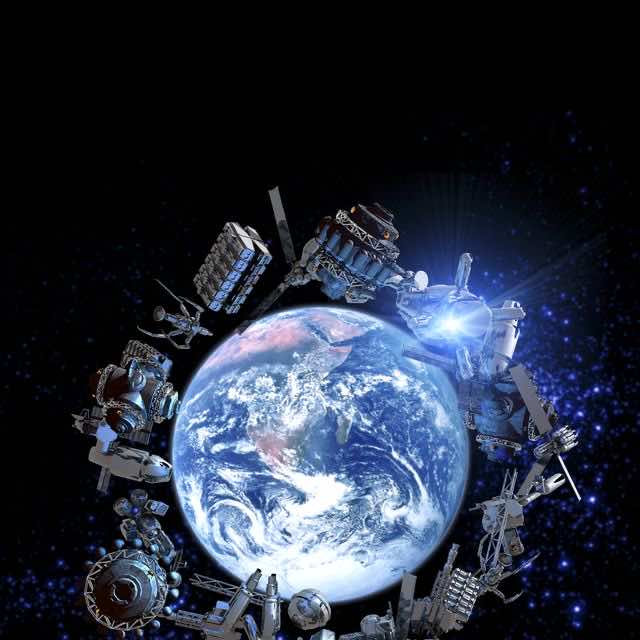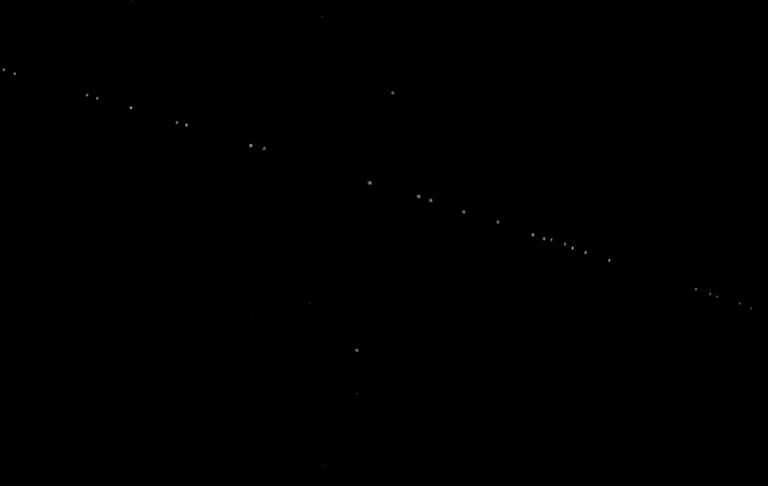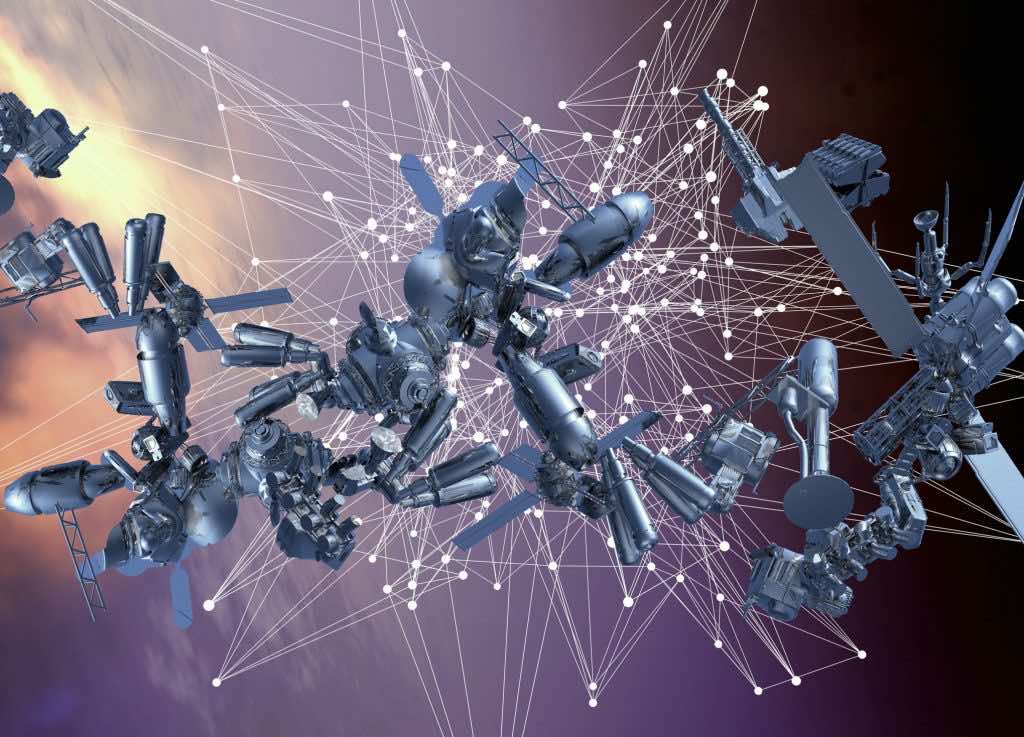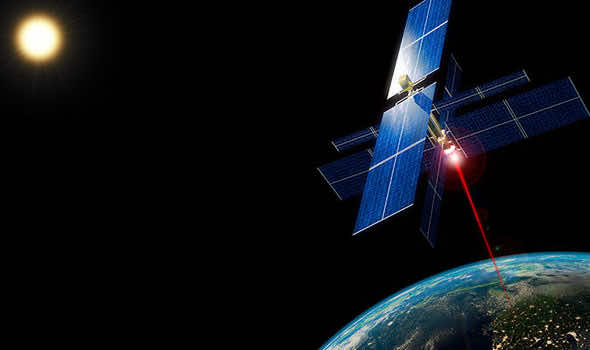We have been blessed with a natural protective shield by mother nature. It absorbs harmful ultraviolet rays, but we had previously damaged it with excessive use of CFCs. It healed over the last decade as the CFCs were banned just like nature does when not interrupted by human activities. However, there is another hole in the Ozone now and alarmingly, this time without any CFCs.
The cause this time around is the aluminium in the mega-constellation satellites for e.g., SpaceX’s Starlink network.

A satellite is a human-made object launched into low-Earth orbit LEO for a designated time span to assimilate our readers better. At present, 5000 satellites are hovering in LEO. Many 40,000 satellites associated with Elon Musk’s ambitious star link, private space companies, and different miscellaneous pretexts are planned to be launched into orbit soon.
It may seem like blowing it out of proportion that the satellites in orbit may cause damage to our world because meteoroids have been in space for billions of years and have seldom caused any problems to our dear home. What needs to be brought in light is that meteors or meteoroids are extraterrestrial bodies and can stay in orbit for who knows how long, unlike our locally manufactured space robots.

“We have 54 tonnes (60 tons) of meteoroid material coming in every day,” head study author Aaron Boley revealed to Space.com. “With the first generation of Starlink, we can expect about 2 tonnes (2.2 tons) of dead satellites re-entering Earth’s atmosphere daily. But meteoroids are mostly rock, which is made of oxygen, magnesium, and silicon. These satellites are mostly aluminum, which the meteoroids contain only in a minimal amount, about 1 [percent].”
Aluminum is at the heart of the unprecedented fiasco. Firstly, it combusts into aluminum oxide, which becomes a reflective component that can adversely affect the climate. Then the same aluminum oxide can rip through the O Zone layer and have a lasting effect on our atmosphere. Let us assess both these problems separately.
Geoengineering and its Limits?
Geoengineering is the mother term under whose ambit falls all the technologies that work to alter or develop the climate or physical dimensions of the planets. Most people associate this term with the mind-boggling idea that Bill Gates wants to bring to life. The launching of reflective aerosols that will “block the sun” will considerably cool the planet and, that may sound crazy, but it is what Bill wants to do!
Although we are still uncertain whether at what scale we will have to take geoengineering to impact our dear planet.
Aluminum oxide is more reflective than glass, with a reflective index of 1.76 and glass at merely 1.52. The researchers added :
“Anthropogenic deposition of aluminum in the atmosphere has long been proposed in the context of geoengineering as a way to alter Earth’s albedo. These proposals have been scientifically controversial, and controlled experiments encountered substantial opposition. Mega-constellations [of satellites] will begin this process as an uncontrolled experiment.”

Will the Ozone Repair Again?
Where does this leave us? With another hole in the Ozone? Other than having a higher reflective index aluminium oxide can also react with the Ozone and and carve a hole in our protective shield. The sturdy Ozone has the capacity to absorb quantities of aluminium without any major problems but the predicted quantities of tonnes of aluminium oxide are set to be a huge problem for the Ozone.
This damage being done to the ozone is excluding the damage doen to the ozone at every LEO rocket launch. “Rockets threaten the ozone layer by depositing radicals directly into the stratosphere, with solid-fueled rockets causing the most damage because of the hydrogen chloride and alumina they contain,” the researchers explained.
While satellites generally disintegrate beyond the stratosphere where most ozone is contained, the particulate can drift down into the stratosphere in order to react there with ozone, scientist Gerhard Drolshagen, an expert on meteoroid material, told Space.com. Aluminum oxide will be absorbed to alarming levels would lead to damage.
A Dubious Future?
With the advent of the satellite age, where do we stand as a race? This piece might not help you completely grasp the consequences of what we are gearing up for in the shape of the huge number of launches expected in the coming years.
The authors explain that the foremost problem is the lack of governing policies and rules and regulations about the disposals of the satellites. A firm governing body requires that would put stern questions to Elon Musk, like what would happen to the satellites and how frequently he intends to replace them.

In addition, the Inter-Agency Space Debris Coordination Committee has suggested, without adequate means of enforcing that, but cannot enforce, that satellites include collision avoidance and deorbiting technologies that add cost. It’s easy to see how that cost stacks when tens of thousands of satellites are planned at once.
“National regulators such as the FCC are assigning orbital shells to mega-constellations on a first-come, first-served basis, without assessing the effects on other countries. These could include making any addition of further satellites to those shells too dangerous to contemplate.”

The researchers say that the ambitious launch of satellites is a threat because of the light pollution and possible cluttering in the sky. “[T]here is little recognition that Earth’s orbit is a finite resource, space, and Earth environments are connected, and the actions of one actor can affect everyone,” they concluded. “Until that changes, we risk multiple tragedies of the commons in space.”


